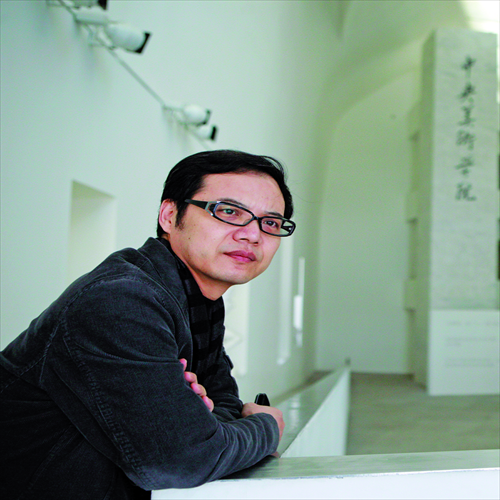Chinese curators eye West

Developing careers in art overseas, building a foundation
"They usually say that exhibitions of contemporary Chinese art in Western countries are all based on Western tastes. Like spring rolls, they are just a side dish in a sumptuous main meal of contemporary art. But now, they've asked a Chinese to be the chef, to see what the course will be," said Wang Chunchen, art critic, curator and the deputy director of curatorial research department at Museum of Central Academy of Fine Arts (CAFA), Beijing.
This year, Wang was invited by the Eli and Edythe Broad Art Museum (EEBAM) at Michigan State University, East Lansing, to be an adjunct curator.
According to Art in America, a monthly magazine concentrating on contemporary art fairs, the director of EEBAM Michael Rush said that Wang was the first China-based curator hired by an American art museum.
Planned to open on November 9, EEBAM is designed by British architect Zaha Hadid, and the museum's collection will feature contemporary art around the world.
Shifting dynamics
Wang told the Global Times that EEBAM is an international museum incorporating arts from different countries and regions; this applies to the staff and management team as well.
Wang will be mainly responsible for exhibitions from China and Asia, and he views his long-term participation as an opportunity to show the art world a different side of China.
"China is at a historical moment and its changes are reflected in the arts. People are aware of this," said Wang, who sees China playing an increasingly important role in the global art system.
Wang is an associate professor at Central Academy of Fine Art, a prestigious art institution in Beijing.
He has organized many international exhibitions in the past, such as "CAFAM Biennale 2011: Super-Organism" in Beijing, "Infinity," in 2009, for Galerie Iris Schuhmacher in Berlin and "Mixed Maze" in 2008, for Red Mansion Foundation in London.
Wang has also published essays on art criticism, like Art Intervenes in Society: A New Artistic Relationship and translated academic works including Arthur C. Danto's After the end of Art and The Abuse of Beauty and Interpreting Art, written by Terry Barret.
Cultural dialogue
Before Wang was hired, he had four meetings with Rush. Wang said Rush wanted to exhibit Chinese arts from a Chinese perspective, diversifying the museum. As communication between China and the world develops, both sides are seeking deeper cultural understandings of each other.
"Communication should be dual sided. Without mutual communication, art cannot be understood in different cultural contexts," said Wang.
Wang's plan for the first Chinese exhibition at EEBAM is called "Re-China: as a cultural concept," which will include ink paintings, oil paintings, photography, videos, animations, installations and sculptures. Wang hopes to invite both young and renowned artists to present a comprehensive view of Chinese arts.
According to him, the exhibition will last three months and will tour around the US, after their debut in EEBAM. The art will have the chance to be collected by the museum.
As the museum is part of Michigan State University, the institution hopes to boost cultural communication and host exhibitions with academic significance. Wang said he will write about the cultural context of China alongside each exhibition.
Education and career
More Chinese artists go abroad now to debut their works and attend art events. However, not many Chinese curators have attained success overseas.
According to Wang, the word "curator" originally emerged alongside the development of gallery and museums. Being a curator requires a broad range of knowledge beyond the arts, as the work entails organizing exhibitions with different themes.
It's crucial to form individual opinions. In China, this is still a relatively new concept. There are many curatorial positions in art museums domestically, but titles vary.
Wang said that the boom of the art market drives the demand for curators in China. Most curators work for business events or regional cultural activities, like the Biennale, instead of working on academic exhibitions.
With the development of contemporary art in China, the career and industry will go through many changes.
During Wang's time at the CAFA, he developed an understanding of the relation between art education and art museums. He finds that China has art museums at art-affiliated colleges, but few at other universities.
Few universities offer art history or art theory courses. The lack of demand and supply slows the development of art museums found on the academic level and hinders understanding of the arts.
"The best universities in China, Peking and Tsinghua, have few art history courses. But Oxford, Harvard and Yale all do."
"You need to learn the importance of art to research and study. Relevant organizations like art museums need to be built within a deeper framework . Without that understanding, there is no foundation. Having a place for exhibitions does not qualify as a real art museum," said Wang.